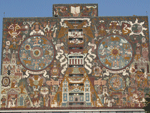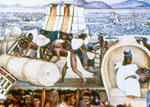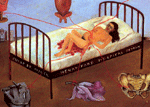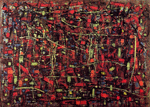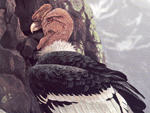20th Century Latin American Humanities Homework #10 |
Q1. |
What major socio-historical event happened in Mexico from 1910 to 1920? How did this event shape Mexican humanities from 1920 to roughly 1950? Refer specifically to at least two items from the 2461 online textbook. |
Q2. |
Identify this building and the humanities creator of the murals that cover it. Answer the HUM 2461 questions embedded in Juan O'Gorman #2.
|
Q3. |
Identify this art work and the humanities artist who created it. Answer the HUM 2461 questions embedded in Diego River #19.
|
Q4. |
Pick one of Diego Rivera's self-portraits (embedded in Diego Rivera #2). Write a succinct evaluation of your own about the portrait you choose. Imagine that you are in the professor's shoes and you are choosing one particular self-portrait of Diego Rivera to explain (a) his personality, (b) his art, and (c) his contribution to humanities with this one painting. |
Q5. |
Identify this rather disturbing painting and its creator. (A) Describe its most important features of content and style, and (B) briefly say what the relationship is between this painting and the art works in Diego Rivera #29, #30, and #31.
|
Q6. |
Define vanguardismo and Magical Realism (lo real maravilloso) according to the discussions of these two 20th century Latin American literary (humanities) movements in the HUM 2461 online textbook. |
Q7. |
In Canto VI in Neruda's monumental poem Heights of Machu Picchu, (A) in what way do you see the reality of (the ruins of) Machu Picchu in the images in this canto? (B) How can we understand the relationship between Machu Picchu stones and "gentle hurricanes" in this canto's last two lines? |
Q8. |
In Canto VIII in the Heights of Machu Picchu, when the poet invites the reader—to whom he refers as "American love"—to come up with him, (A) to what is the beloved reader (i.e., this American lover, we the readers) being invited in the rest of this Canto? (B) How do you interpret the last two lines of this Canto? |
Q9. |
|
Q10. |
In Canto X in the Heights of Machu Picchu, the poet (Neruda), after worring about misery, hunger, and slavery in the first three stanzas of this Canto, the poet (Pablo Neruda) talks to (i.e., invokes, apostrophizes) "Ancient America" and he asks her (i.e., America) a question. (A) What is this question? (B) What is the poet's doubt or quandary? (C) Is there any sense of lo ctónico (in a vanguardista sense; in the sense this term was used at the very beginning of HUM 2461) in the terms of this question? (Hint: see definition of lo ctónico in the Support Pages.) |
Q11. |
R |
Q12. |
I |
Q13. |
I |
Q14. |
In |
Q15. |
In Canto XI in the Heights of Machu Picchu, when the poet sees the condor, what all is the poet seeing? What is the relationship between the image of the condor and the final line, "rise and be born with me, my brother" (tr. WTL)? Think about the image of the condor in Machu Picchu #21 and in this image in the small essay on Neruda: |
